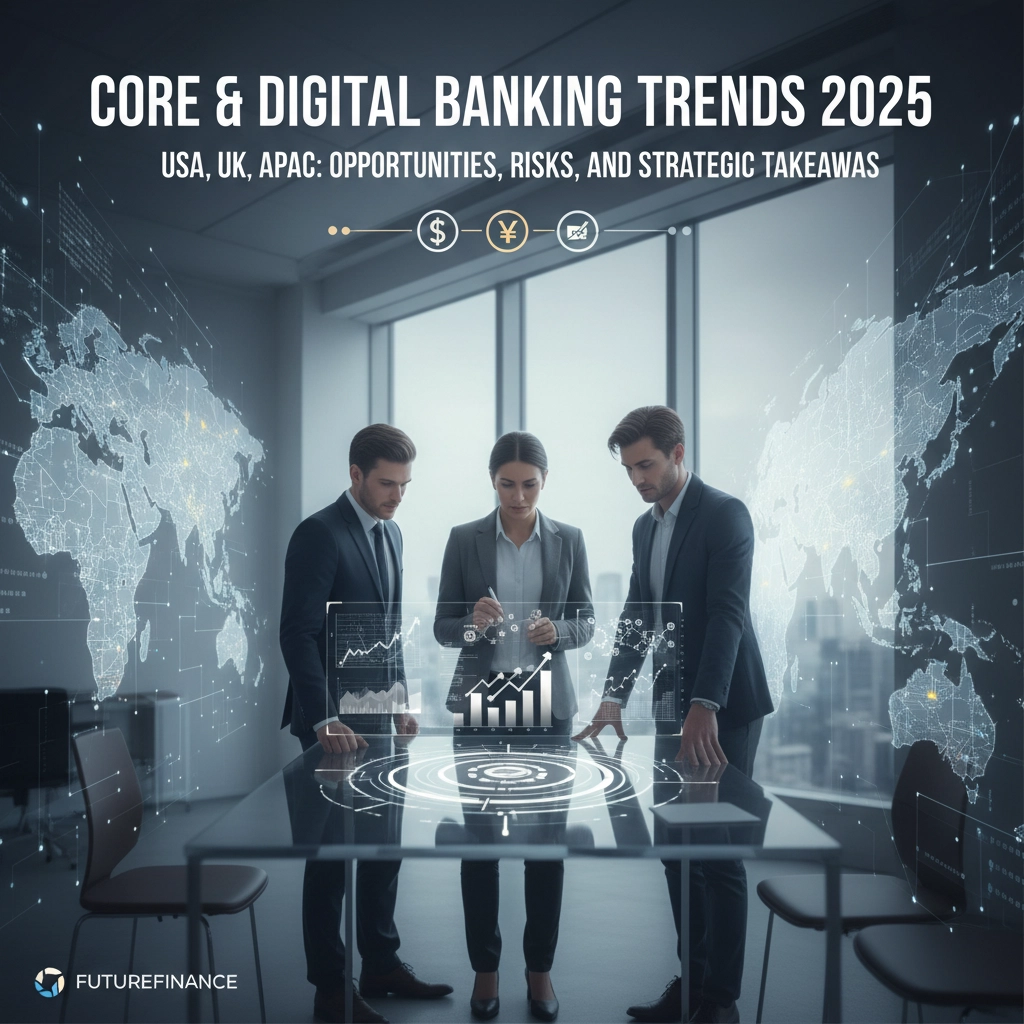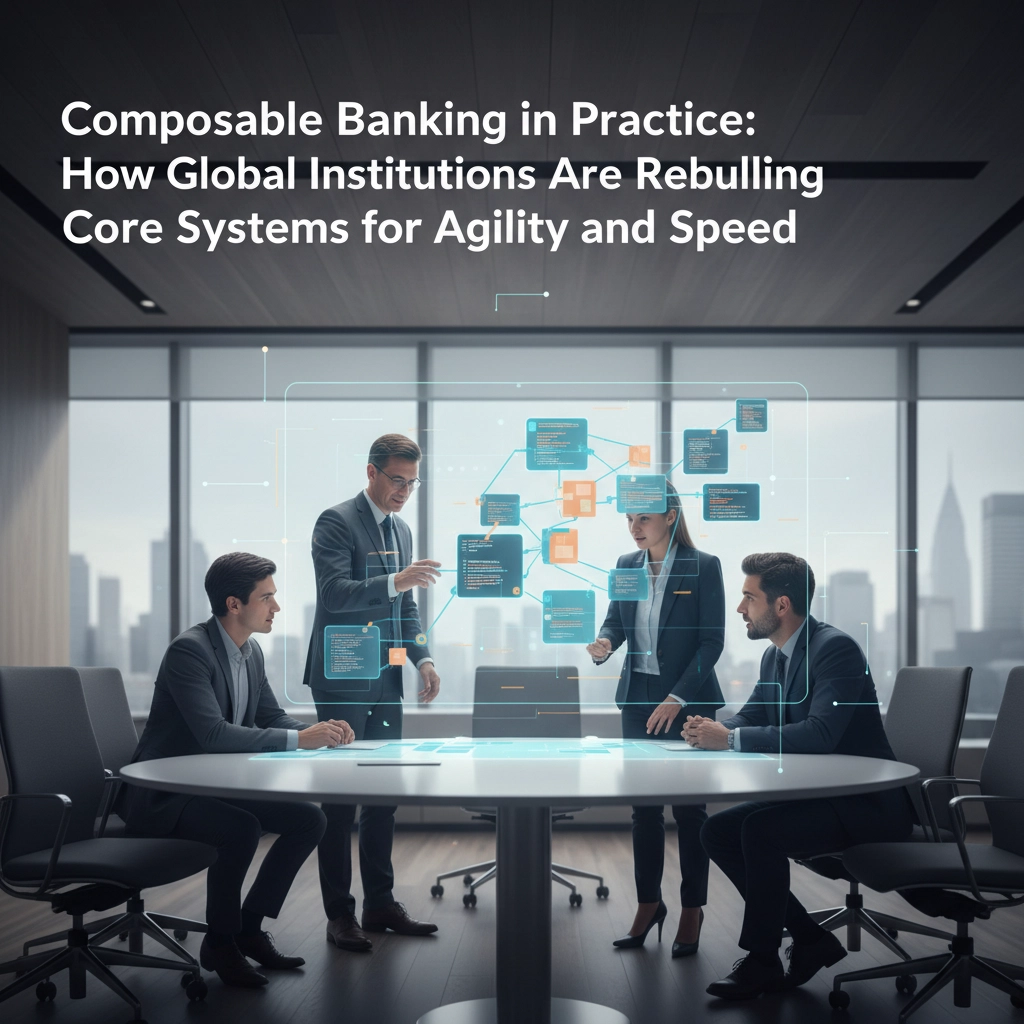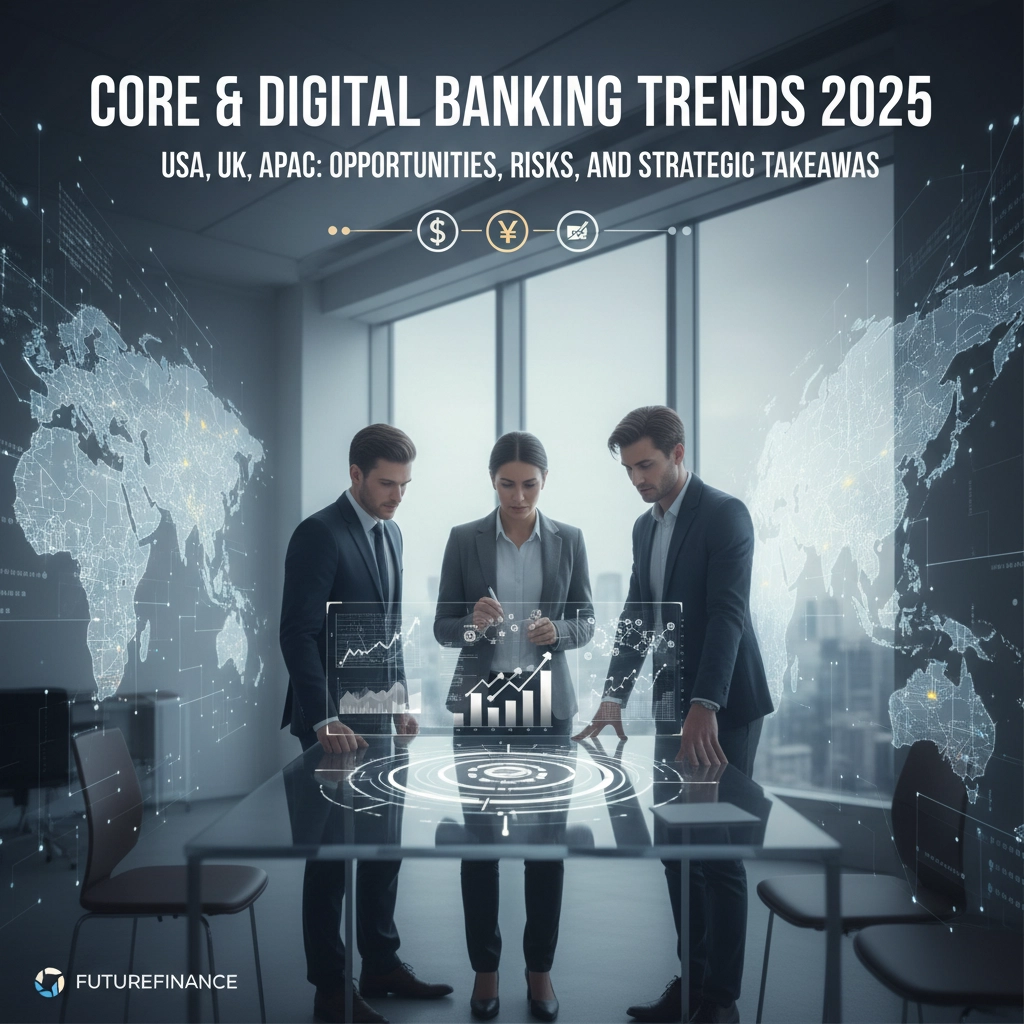The banking sector stands at a transformative crossroads in 2025, with core banking software and digital transformation reshaping financial landscapes across the USA, UK, and APAC markets. Financial institutions face unprecedented opportunities alongside strategic challenges that demand immediate attention and decisive action.
Market Scale and Growth Projections
The global core banking software market demonstrates explosive growth, expanding from $16.79 billion in 2024 to a projected $19.67 billion in 2025, ultimately reaching $64.96 billion by 2032. This represents a remarkable 18.6% compound annual growth rate, signaling urgent modernization requirements across the industry.
Digital banking generates even more substantial revenue streams, with worldwide platforms projected to produce $1.61 trillion in net interest income for 2025. The sector maintains robust growth momentum at 6.80% CAGR through 2029, targeting $2.09 trillion by decade's end. Currently, 1.75 billion digital banking accounts process $1.4 trillion annually, equivalent to $2.7 million per minute in transaction volume.

Regional Market Dynamics and Opportunities
United States: Digital-First Market Leadership
North America maintains the largest market share in core banking software adoption, driven by major financial institutions and substantial technology investments. The region benefits from established digital infrastructure and innovation-focused regulatory environments.
Key Market Indicators:
- 76% of American customers actively use mobile banking applications
- 1,646 physical branches close annually since 2018, accelerating digital migration
- Legacy system replacement drives multi-billion dollar modernization investments
- Strong fintech ecosystem creates partnership and acquisition opportunities
Strategic Opportunities:
- Cloud adoption rates enable scalable, cost-effective platform deployment
- Regulatory compliance requirements generate demand for advanced banking software
- API-driven architectures support open banking initiatives and third-party integrations
- Mobile-first customer experience improvements deliver competitive advantages
United Kingdom and Europe: Regulatory-Driven Innovation Hub
European markets demonstrate significant expansion through widespread cloud adoption and progressive regulatory frameworks. PSD2 open banking regulations create new revenue streams and partnership models, while mature banking sectors provide stable foundations for innovation.
Market Advantages:
- Strong fintech hubs in London, Berlin, and Nordic countries drive innovation
- MiCA stablecoin regulations provide regulatory clarity for cryptocurrency integration
- Customer experience improvement initiatives accelerate platform modernization
- Government support for digital innovation and financial inclusion
Growth Catalysts:
- Open banking API ecosystems enable third-party service integration
- Cross-border payment optimization through digital infrastructure
- ESG compliance requirements drive sustainable banking technology adoption
- Real-time payment systems create operational efficiency improvements

Asia-Pacific: Highest Growth Trajectory
APAC markets exhibit the highest projected growth rates globally, fueled by infrastructure modernization in developed markets and rapid digitalization in emerging economies. Government-sponsored digital transformation initiatives accelerate adoption across multiple jurisdictions.
Regional Highlights:
- Thailand's virtual banking licenses commence operations mid-2026
- China projects $528.8 billion in digital banking net interest income by 2025
- India, Indonesia, and Vietnam demonstrate rapid mobile banking adoption
- Singapore and Hong Kong serve as regional fintech innovation centers
Expansion Opportunities:
- Financial inclusion initiatives target underbanked populations
- Mobile-first banking solutions capitalize on smartphone penetration
- Government digitalization programs provide regulatory support
- Cross-border payment corridors enhance regional connectivity
Technology Transformation Drivers
Cloud-Native Infrastructure Dominance
Software-as-a-Service (SaaS) deployment models deliver superior agility and cost-efficiency compared to on-premises solutions. Financial institutions achieve 20-40% operating cost reductions through cloud migration, automation implementation, and physical location optimization.
Core banking platforms increasingly adopt cloud-native architectures that enable:
- Rapid deployment and scaling capabilities
- Enhanced disaster recovery and business continuity
- Reduced infrastructure maintenance requirements
- Improved security through specialized cloud providers
Artificial Intelligence and Machine Learning Integration
Generative AI technologies transform core banking processes while enabling hyper-personalization at scale. Banks leverage AI capabilities for fraud detection, customer service automation, risk assessment, and predictive analytics.
AI Implementation Areas:
- Real-time transaction monitoring and fraud prevention
- Automated customer service through intelligent chatbots
- Personalized product recommendations and cross-selling
- Credit risk assessment and loan processing automation

API-Driven Composable Banking
Modern banking platforms adopt API-first composable architectures that enable modular functionality and rapid integration capabilities. This approach supports open banking compliance while facilitating partnership ecosystems between traditional banks and fintech companies.
Composable Banking Benefits:
- Faster time-to-market for new products and services
- Enhanced third-party integration capabilities
- Reduced vendor lock-in through modular architecture
- Improved scalability and system flexibility
Strategic Risks and Mitigation Strategies
Implementation Complexity Management
Core banking system modernization presents substantial implementation challenges requiring comprehensive project management and risk mitigation strategies.
Primary Risk Areas:
- Data migration complexity and potential service disruptions
- Integration difficulties with existing legacy systems
- Staff training requirements and change management
- Budget overruns and timeline extensions
Mitigation Approaches:
- Phased implementation strategies minimize operational disruption
- Comprehensive testing protocols ensure system reliability
- Change management programs support staff adaptation
- Experienced implementation partners reduce project risks
Cybersecurity and Regulatory Compliance
Rapid digitalization increases cybersecurity threat surfaces while regulatory requirements continue evolving. Financial institutions must balance innovation with robust risk management frameworks.
Compliance Considerations:
- Central Bank Digital Currency (CBDC) regulatory preparation
- Enhanced data privacy regulations across multiple jurisdictions
- Cryptocurrency integration compliance requirements
- Cross-border transaction monitoring and reporting

Competitive Pressure and Market Disruption
Traditional banks face intensifying competition from fintech companies and neobanks built on modern technology stacks. Established institutions must invest heavily in core infrastructure upgrades while maintaining operational continuity.
Competitive Response Strategies:
- Digital transformation acceleration through strategic partnerships
- Customer experience optimization across all touchpoints
- Innovation lab establishment for rapid product development
- Acquisition strategies targeting complementary fintech capabilities
Strategic Implementation Roadmap
North American Financial Institutions
Immediate Priorities:
- Prioritize cloud-native core banking platform selection and deployment
- Develop comprehensive mobile-first customer experience strategies
- Implement branch optimization programs while maintaining customer access
- Establish fintech partnership frameworks for innovation acceleration
Success Metrics:
- Mobile banking adoption rates exceeding 80%
- Operating cost reduction of 25-35% within 24 months
- Customer satisfaction scores improvement of 15-20%
- Time-to-market reduction for new products by 50%
European Banking Organizations
Strategic Focus Areas:
- Capitalize on PSD2 and open banking regulations for revenue diversification
- Prepare comprehensive MiCA compliance frameworks for cryptocurrency services
- Leverage strong fintech partnerships for accelerated innovation cycles
- Implement ESG-compliant banking technology solutions
Implementation Targets:
- Open banking API adoption across 90% of customer touchpoints
- Third-party integration capabilities enabling 5-10 new partnerships annually
- Regulatory compliance automation reducing manual processes by 60%
- Cross-border payment processing improvements of 40% efficiency gains
Asia-Pacific Market Players
Growth Strategies:
- Position for rapid market expansion in emerging economies
- Invest in mobile banking infrastructure supporting financial inclusion
- Develop virtual banking capabilities ahead of license availability
- Establish regional partnership networks for cross-border services
Performance Indicators:
- Mobile banking penetration rates exceeding 70% in target markets
- Financial inclusion metrics improving by 25% annually
- Virtual banking readiness achieving regulatory compliance within 12 months
- Cross-border payment volume growth of 35-50% year-over-year

Future-Ready Banking Excellence
The banking industry's transformation in 2025 demands strategic vision, substantial investment, and comprehensive risk management. Financial institutions must embrace digital-first approaches while maintaining operational excellence and customer trust.
Universal Success Factors:
- Embrace Comprehensive Digital Transformation: Core banking modernization represents fundamental business evolution beyond IT upgrades
- Invest in AI Governance: Establish robust frameworks balancing innovation with risk management and customer trust
- Adopt Composable Architectures: Implement modular, API-driven platforms enabling rapid market adaptation
- Prioritize Customer Experience: Deliver frictionless, personalized services meeting evolving digital expectations
Organizations that successfully balance technological advancement with operational excellence will establish sustainable competitive advantages in the evolving digital banking landscape. The convergence of cloud computing, artificial intelligence, and regulatory evolution creates unprecedented opportunities for market leadership and customer value creation.
Stay ahead of industry transformation through strategic partnerships with experienced digital transformation consultants who understand the complexities of core banking modernization across global markets.




Leave a comment: